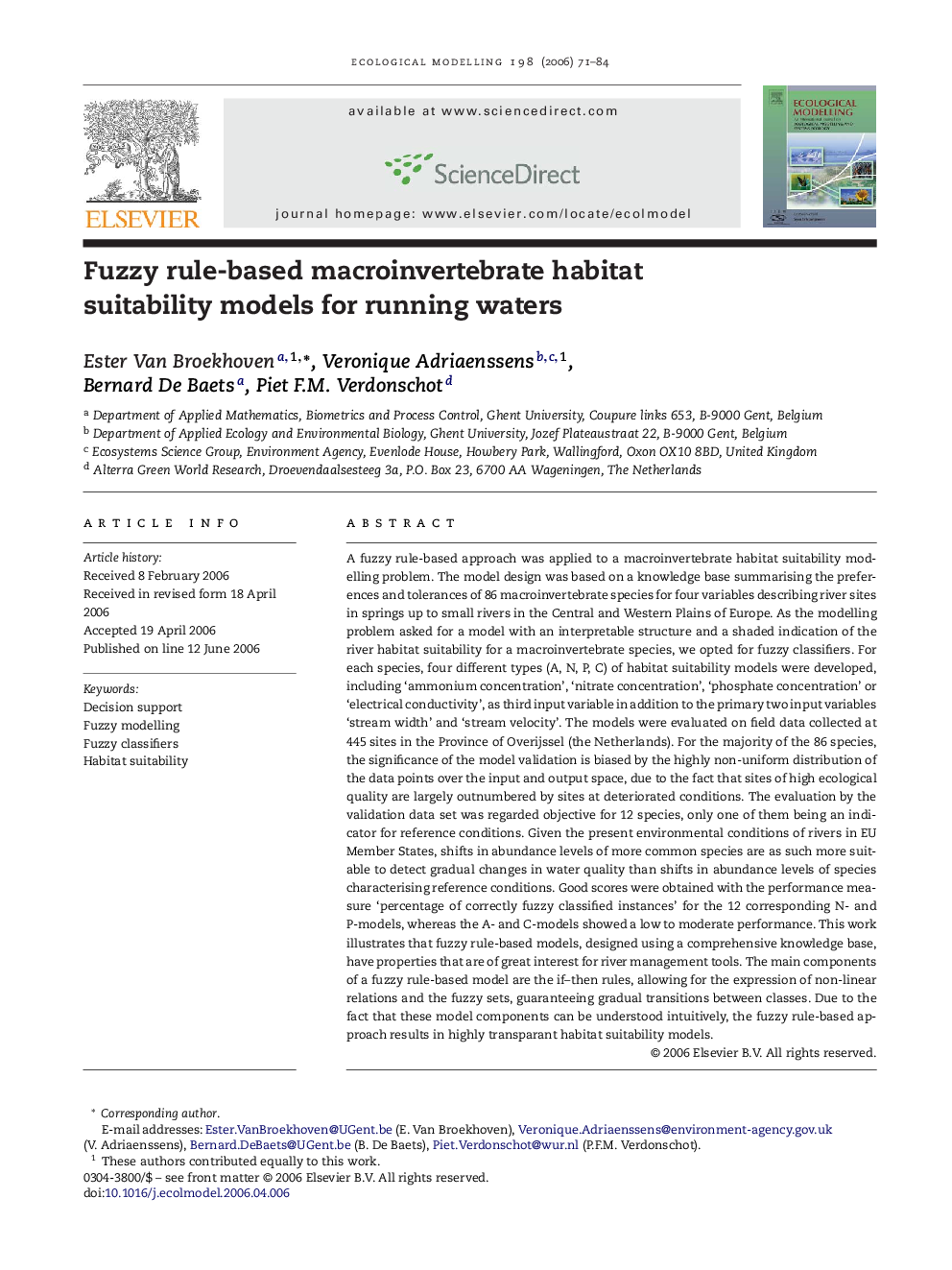| کد مقاله | کد نشریه | سال انتشار | مقاله انگلیسی | نسخه تمام متن |
|---|---|---|---|---|
| 4378837 | 1617558 | 2006 | 14 صفحه PDF | دانلود رایگان |

A fuzzy rule-based approach was applied to a macroinvertebrate habitat suitability modelling problem. The model design was based on a knowledge base summarising the preferences and tolerances of 86 macroinvertebrate species for four variables describing river sites in springs up to small rivers in the Central and Western Plains of Europe. As the modelling problem asked for a model with an interpretable structure and a shaded indication of the river habitat suitability for a macroinvertebrate species, we opted for fuzzy classifiers. For each species, four different types (A, N, P, C) of habitat suitability models were developed, including ‘ammonium concentration’, ‘nitrate concentration’, ‘phosphate concentration’ or ‘electrical conductivity’, as third input variable in addition to the primary two input variables ‘stream width’ and ‘stream velocity’. The models were evaluated on field data collected at 445 sites in the Province of Overijssel (the Netherlands). For the majority of the 86 species, the significance of the model validation is biased by the highly non-uniform distribution of the data points over the input and output space, due to the fact that sites of high ecological quality are largely outnumbered by sites at deteriorated conditions. The evaluation by the validation data set was regarded objective for 12 species, only one of them being an indicator for reference conditions. Given the present environmental conditions of rivers in EU Member States, shifts in abundance levels of more common species are as such more suitable to detect gradual changes in water quality than shifts in abundance levels of species characterising reference conditions. Good scores were obtained with the performance measure ‘percentage of correctly fuzzy classified instances’ for the 12 corresponding N- and P-models, whereas the A- and C-models showed a low to moderate performance. This work illustrates that fuzzy rule-based models, designed using a comprehensive knowledge base, have properties that are of great interest for river management tools. The main components of a fuzzy rule-based model are the if–then rules, allowing for the expression of non-linear relations and the fuzzy sets, guaranteeing gradual transitions between classes. Due to the fact that these model components can be understood intuitively, the fuzzy rule-based approach results in highly transparant habitat suitability models.
Journal: Ecological Modelling - Volume 198, Issues 1–2, 15 September 2006, Pages 71–84